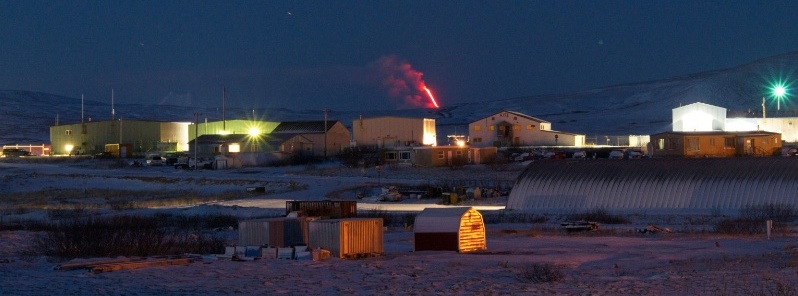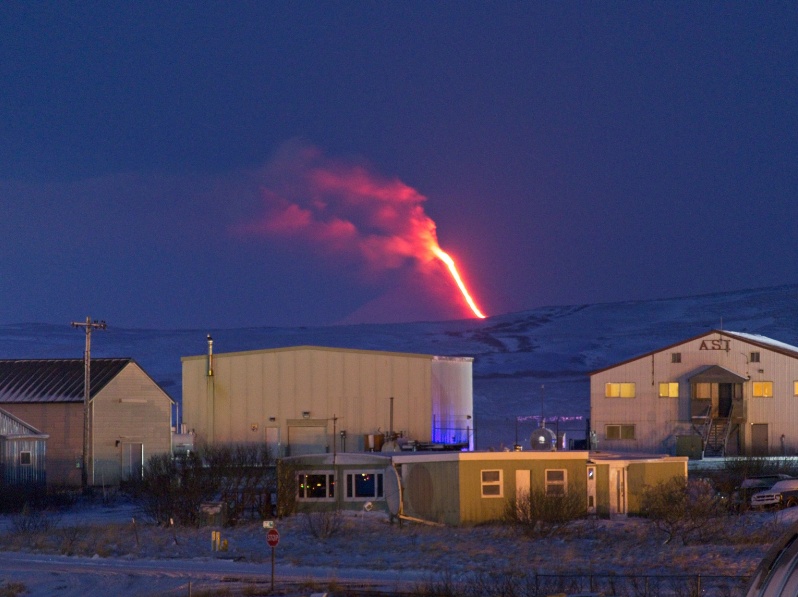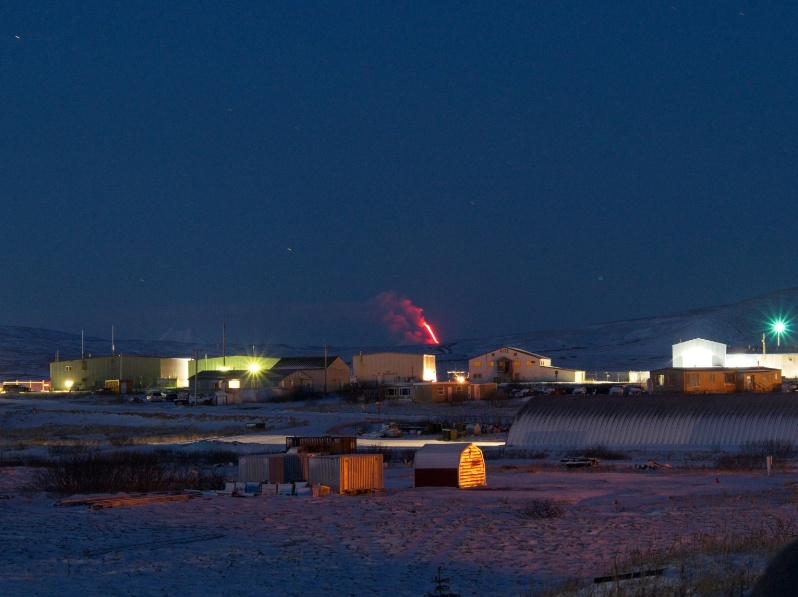Eruption at Shishaldin volcano, Aviation Color Code raised to Red, Alaska

Starting at about 09:30 UTC (00:30 AKST) on January 19, 2020, the eruption at Shishaldin volcano in Alaska intensified, and about 13:30 UTC began generating a more ash-rich volcanic plume. The Aviation Color Code was raised to RED and the volcano Alert Level to WARNING at 17:28 UTC.
The plume extends from the summit 150 km (93 miles) east and is as high as about 6 km (20 000 feet) above sea level, as seen in satellite data at 17:17 UTC. Seismicity is elevated and the eruption is detected on regional infrasound arrays, the Alaska Volcano Observatory (AVO) reports.
"Eruptive activity continues at the volcano, despite a drop in the level of seismicity," AVO reported at 02:12 UTC on January 20.
"A robust steam and ash plume continues to drift to the south-southeast, as visible in web camera and satellite imagery and reported by passing aircraft. The volcanic cloud extends up to ~150 km (~90 miles) from the volcano with its top as high as 9.1 km (30 000 feet) a.s.l. Trace ashfall in False Pass has been reported."
The Aviation Color Code was lowered back to Orange and Alert Level to Watch at 09:37 UTC on January 20, following greatly declined ash emissions at about 05:30 UTC and low seismicity.
Satellite images show the detached volcanic cloud drifting ESE over the Pacific Ocean.
"Low-level steam and ash emissions may be ongoing from the summit vent. It is possible for a more significant eruption to resume with little warning," AVO said.
The last significant eruptive activity occurred on Tuesday, January 7, when sustained explosive activity generated an ash plume that drifted over 200 km (320 miles) to the ENE, depositing trace ashfall on Cold Bay and King Cove and causing several flight cancellations.
AVO raised the Aviation Color Code to RED and Alert Level to WARNING in response to that activity and lowered it back to ORANGE/WATCH on the same day after the activity stopped.
The volcano was relatively quiet since then and seismicity was low for most of the week, AVO said.


Images courtesy A. Merculief, USGS/AVO
Geological summary
The beautifully symmetrical volcano of Shishaldin is the highest and one of the most active volcanoes of the Aleutian Islands. The 2857-m-high (9 379 feet), glacier-covered volcano is the westernmost of three large stratovolcanoes along an E-W line in the eastern half of Unimak Island.
The Aleuts named the volcano Sisquk, meaning "mountain which points the way when I am lost." A steady steam plume rises from its small summit crater. Constructed atop an older glacially dissected volcano, it is Holocene in age and largely basaltic in composition.
Remnants of an older ancestral volcano are exposed on the west and NE sides at 1 500 -1 800 m (4 920 – 5 900 feet) elevation. There are over two dozen pyroclastic cones on its NW flank, which is blanketed by massive aa lava flows.
Frequent explosive activity, primarily consisting of strombolian ash eruptions from the small summit crater, but sometimes producing lava flows, has been recorded since the 18th century. (GVP)
Featured image credit A. Merculief, USGS/AVO

Man, all over the world things are happening. It is like we are on the edge of Tribulation. The earth just groans and groans.